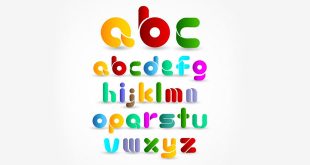Allegory Examples
Classical Era of Literature
- During this time, one of the most famous works was the Aesop’s Fables in the 6th century BC. A fable is a story that illustrates a moral. The works include animals, plants and other animated objects that portray a character and often speak about human nature. Each animal does not necessarily stand for something but it was a means of conveying a message to the readers, indirectly. After Aesop, came Pharedrus and Babrius in the 1st century AD, who published the Indian fable called Sanskrit Bidpai.
- Classic literature also has the most popular allegories such as The Cave in Plato’s Republic. Here, a fictional dialogue has been written between Socrates, Plato’s teacher, and Glaucon, Plato’s brother. The conversation is based on Socrates describing a group of people living chained to the wall of a cave and facing it, all their lives. Shadows are cast on the wall due to a fire placed behind them and these people begin to give form to them. Socrates then says that these shadows are how the prisoners (philosophers) assume reality is. The story is meant to explain the place of a philosopher in society.
- Other allegories written during this period are: the metaphor in Psalm 80 as part of the Hebrew Bible and the Story of the Stomach and its members in the speech of Menenium Agrippa.
Medieval Era Of Literature
- In beginning of the medieval period, Marie de France (1200AD) composed 102 fables in verse, which later became a common form of children’s literature. This period saw the ‘allegory’ more firm and applicable to larger world issues. Different stories in the form of science, fantasy and fiction are being able to portray hidden meanings through their works.
- The Middle Age saw a recognizable form in allegories with respect to the Bible, as this connected the ancient world with the new Christian world. There were 4 types of allegories written during this time: literal with no underlying meaning; typological with allegorical references to Christ’s life and Old Testament; moral and giving a certain value to the story; and anagogical- dealing with the future of Christianity in the form of prophecies.
- The greatest works during this time was Le Roman de la Rose, The Divine Comedy, Piers Plowman and Pearl. All these allegories were written in the late Medieval Ages and had a huge impact on Western literature. Piers Plowman was particularly important in allegorical devices like dream-vision, pilgrimage, personification and satire. The anagogical story of Pearl is based on a dreamer introduced to Jersusalem and the focus is on the meaning of death.
- Although several other works called Cosmographia by Bernard Silvestris and Plaint of Nature by Alanus ab Insulis were created. Personifications and scientific questions and metaphysics were mainly dealt with.
Modern Era Of Literature
- Regarded as the most famous piece of allegorical literature is John Bunyan’s Pilgrim Progress, written in 1678. Here, the hero, Everyman, runs away from the City of Destruction and travels through the Valley of Shadow of Death, Vanity Fair and Doubting Castle to reach the Celestial City. The narrative is based on a human soul’s journey, fighting temptation and negativity, only to reach salvation.
- One of the current stories written by Jonathan Swift, called Gullivers Travels, is also a symbol of political allegory, critiquing contemporary philosophies and customs. Every character in this book depicts a historical figure or idea. The Brobdingnagian King is made to sound like a different perspective on morality and governance. The Lilluputians are ruled by an Emperor, who appoints his own high court officials. This is probably an allegorical allusion to governance with the lack of rational principles.
- Other important allegories during the Modern Era are George Orwell’s Animal Farm, Butler’s Erewhon, Anna Sewell’s Black Beauty, Lewis’ The Lion, The Witch and the Wardrobe, Herman Melville’s Moby Dick and so on.
Art
- A painting called Titan’s Allegory of Age Governed by Prudence showed three human heads that was a symbol of age. The triple-headed beast comprising of the dog, lion and wolf stood for prudence.
- The Allegory of Painting was yet another classic created by Jan Vemeer. The artwork consists of a painter and his subject by the side of a window. The girl is said to be the Muse of History, Clio, the double-headed eagle was a symbol of the Austrian Habsburg Dynasty and the map on the wall shows a division of Netherlands. There are various political allegories with respect to this painting.
Although allegories just seem like a figure of speech of the English Language, it is also a more imaginative way of expressing views and telling a story. Some examples of allegories lie in the New Testament, parables told by Jesus Christ like the Prodigal Son and even, the television series called ‘Twilight Zone’.
 Class Notes NCERT Solutions for CBSE Students
Class Notes NCERT Solutions for CBSE Students


